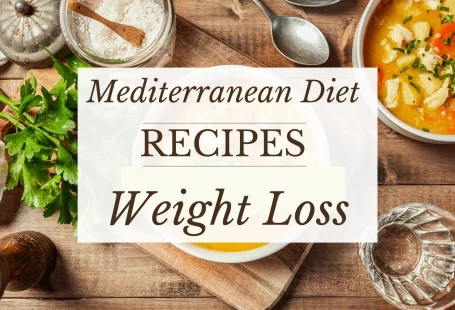What does paleo mean?
The term “Paleo” refers to the Paleolithic era, which is a prehistoric period of human history that dates from about 2.6 million years ago to around 10,000 years ago. The word “Paleo” is short for “Paleolithic.” The Paleolithic era is often referred to as the Stone Age because it was a time when early humans primarily used stone tools.
In the context of the “Paleo Diet” or “Paleolithic Diet,” “Paleo” signifies an approach to eating that seeks to mimic the dietary patterns of our hunter-gatherer ancestors from the Paleolithic era. The idea behind the Paleo Diet is that our bodies have not evolved to process the foods introduced with agriculture, such as grains and dairy products, which emerged more recently in human history.
Key principles of the Paleo Diet typically include:
- Whole Foods: Emphasis on whole, unprocessed foods like lean meats, fish, fruits, vegetables, nuts, and seeds.
- Exclusion of Processed Foods: Avoidance of processed foods, refined sugars, and refined grains.
- No Grains: Elimination of grains, including wheat, oats, rice, and corn, due to their relatively recent introduction to the human diet.
- No Dairy: Exclusion of dairy products, as dairy farming also began relatively recently in human history.
- No Legumes: Avoidance of legumes like beans and lentils due to their lectin content.
- No Added Sugar: Elimination of added sugars, including table sugar, high-fructose corn syrup, and artificial sweeteners.
- Emphasis on Healthy Fats: Inclusion of healthy fats from sources like avocados, olive oil, and nuts.
- Protein Sources: Consumption of lean meats, fish, and other protein sources.
It’s important to note that the Paleo Diet is a modern dietary concept inspired by historical eating patterns, and its exact composition can vary among individuals and proponents. Some people choose to follow the Paleo Diet for potential health benefits, such as improved weight management and reduced risk of certain chronic diseases. However, like any diet, it has both supporters and critics, and its long-term effects and suitability for individual health goals should be considered before adopting it. Consulting with a healthcare professional or registered dietitian is advisable before making significant dietary changes.
What are the benefits of the paleo diet?
The Paleo Diet, inspired by the eating patterns of our hunter-gatherer ancestors from the Paleolithic era, has gained popularity for several perceived health benefits. However, it’s important to note that while some people may experience these benefits, the diet may not be suitable for everyone, and individual responses can vary. Here are some potential benefits associated with the Paleo Diet:
- Weight Loss: Many followers of the Paleo Diet report weight loss and improved body composition, primarily due to the emphasis on whole, nutrient-dense foods and the avoidance of processed and high-calorie foods.
- Improved Blood Sugar Control: The diet’s focus on low-glycemic foods, such as fruits, vegetables, and lean proteins, may help stabilize blood sugar levels, which can be beneficial for individuals with type 2 diabetes or those at risk of developing it.
- Increased Nutrient Intake: The diet encourages the consumption of a variety of fruits, vegetables, nuts, and seeds, providing essential vitamins, minerals, and antioxidants.
- Reduced Inflammation: By avoiding processed foods and grains, which can contribute to inflammation in some individuals, the Paleo Diet may help reduce overall inflammation in the body.
- Improved Digestion: Some people report improved digestive health and reduced gastrointestinal symptoms, such as bloating and gas, when following a Paleo-style diet.
- Better Satiety: The inclusion of protein-rich foods and healthy fats can promote feelings of fullness and satiety, potentially reducing overall calorie intake.
- Support for Allergies and Sensitivities: Eliminating dairy and grains from the diet can be beneficial for individuals with lactose intolerance or gluten sensitivity.
- Improved Lipid Profiles: Some studies suggest that the Paleo Diet can lead to favorable changes in lipid profiles, including lower triglycerides and increased HDL (good) cholesterol.
- Better Dental Health: The avoidance of sugary foods and processed carbohydrates can lead to improved oral health and reduced risk of cavities.
- Whole, Unprocessed Foods: The focus on whole, unprocessed foods can promote a more balanced and nutrient-dense diet.
It’s important to consider that the Paleo Diet has its critics, too. Some experts raise concerns about its restrictive nature, potential nutrient deficiencies (such as calcium and fiber), and the exclusion of food groups that can provide health benefits when properly prepared and consumed.
Individuals interested in trying the Paleo Diet should consult with a healthcare professional or registered dietitian to ensure it aligns with their health goals and nutritional needs. Additionally, the long-term effects of the diet are still being studied, so more research is needed to fully understand its impact on health.
Who should not follow paleo diet?
While the Paleo Diet can offer potential benefits for some individuals, it may not be suitable for everyone. Here are some groups of people who should exercise caution or avoid the Paleo Diet:
- People with Specific Medical Conditions: If you have certain medical conditions, it’s essential to consult with a healthcare professional or registered dietitian before starting the Paleo Diet. Conditions like kidney disease, liver disease, pancreatitis, and certain gastrointestinal disorders may require specific dietary restrictions that could conflict with the Paleo Diet.
- Pregnant or Breastfeeding Women: Pregnant and breastfeeding women have increased nutritional needs, including additional calcium and folate. The restrictive nature of the Paleo Diet may make it challenging to meet these increased requirements, so pregnant and breastfeeding women must seek guidance on appropriate dietary choices.
- Athletes and Highly Active Individuals: Athletes and those who engage in rigorous physical activity may require more carbohydrates for energy and recovery. The low-carbohydrate nature of the Paleo Diet could potentially impact athletic performance, so adjustments may be necessary.
- Children and Adolescents: Children and teenagers have specific nutrient requirements for growth and development. Restricting food groups like dairy and whole grains, which provide essential nutrients like calcium and fiber, may not be appropriate for this age group without careful planning.
- People at Risk of Nutrient Deficiencies: Eliminating entire food groups, such as dairy and grains, can increase the risk of nutrient deficiencies if not adequately replaced. For example, calcium from dairy products and fiber from whole grains can be challenging to replace entirely.
- Individuals with a History of Eating Disorders: The strict dietary rules of the Paleo Diet may be triggering for individuals with a history of disordered eating habits or eating disorders. Consulting with a mental health professional is essential in such cases.
- People with Allergies or Sensitivities: While the Paleo Diet eliminates common allergens like dairy and gluten-containing grains, it may still include other potential allergens like nuts, eggs, and shellfish. Those with known food allergies or sensitivities should be cautious and choose suitable substitutions.
- Individuals on Medications: Some medications may interact with dietary choices, so it’s advisable for individuals taking specific medications to discuss dietary changes with their healthcare provider.
- People Seeking a Sustainable Long-Term Diet: The strict nature of the Paleo Diet may make it challenging to maintain in the long term. Sustainability and enjoyment of a diet are crucial factors for successful, lasting dietary changes.
Before adopting any diet, including the Paleo Diet, it’s wise to consult with a healthcare professional or registered dietitian who can assess your individual health needs and provide personalized guidance. They can help you make informed decisions about whether the Paleo Diet is appropriate for you and, if so, how to follow it in a way that meets your nutritional requirements.
What are the three disadvantages of the paleo diet?
While the paleo diet has gained popularity for its emphasis on whole, unprocessed foods, there are some potential disadvantages associated with it. It’s important to be aware of these limitations when considering this dietary approach. Here are three disadvantages of the paleo diet:
- Nutrient Deficiencies: The paleo diet excludes several food groups, including grains, legumes, and dairy. By doing so, it can limit your intake of essential nutrients. For example, the exclusion of grains and legumes means you may miss out on valuable sources of dietary fiber and certain vitamins and minerals. The absence of dairy can lead to lower calcium and vitamin D intake, which are crucial for bone health. To mitigate these deficiencies, paleo dieters must carefully plan their meals to ensure they obtain all necessary nutrients.
- Difficulty for Vegetarians and Vegans: The paleo diet places a strong emphasis on animal products like meat and fish, which can make it challenging for individuals who follow vegetarian or vegan lifestyles. Since these individuals avoid animal products, it may be difficult for them to meet their protein needs while adhering to paleo principles. In such cases, plant-based protein sources may not be allowed within the paleo framework, making it less practical for these dietary preferences.
- Cost and Sustainability: The paleo diet’s reliance on high-quality, grass-fed, and organic animal products can be expensive. These items tend to cost more than conventional alternatives. Additionally, some critics argue that the paleo diet’s heavy reliance on animal products is not environmentally sustainable, as it can contribute to increased greenhouse gas emissions and resource consumption. This aspect may not align with individuals’ ethical or environmental values.
It’s worth noting that the paleo diet can be adapted to suit individual needs and preferences, and some of these disadvantages can be mitigated with careful planning and consideration. However, it’s essential to be aware of these potential drawbacks and consult with a healthcare professional or nutritionist before adopting the paleo diet or any other dietary plan to ensure it aligns with your specific health goals and requirements.
Is keto and paleo the same?
Keto and Paleo diets are not the same; they are distinct dietary approaches with some similarities but also significant differences.
- Keto (Ketogenic Diet):
- Focus: The primary focus of the ketogenic diet is to shift the body into a state of ketosis, where it primarily burns fat for energy instead of carbohydrates. This is achieved by consuming very low levels of carbohydrates, typically around 5-10% of daily caloric intake.
- Macronutrients: A typical keto diet is high in fat (approximately 70-80% of daily calories) and moderate in protein (around 20-25% of daily calories).
- Allowed Foods: While the focus is on macronutrient ratios, there are no specific restrictions on the types of foods, as long as they fit within the carbohydrate limits. This can include foods like cheese, bacon, and other high-fat items.
- Purpose: The ketogenic diet is often used for weight loss, managing epilepsy, and improving blood sugar control in individuals with diabetes.
- Paleo (Paleolithic Diet):
- Focus: The paleo diet is centered around the idea of eating foods that were available to our hunter-gatherer ancestors during the Paleolithic era. The focus is on natural, unprocessed foods.
- Macronutrients: While not as strict as keto, paleo typically encourages a balanced intake of macronutrients. It does not specifically dictate fat, carbohydrate, or protein percentages.
- Allowed Foods: The paleo diet promotes the consumption of lean meats, fish, fruits, vegetables, nuts, seeds, and healthy fats like olive oil and avocado. It excludes processed foods, grains, legumes, dairy, and refined sugars.
- Purpose: Paleo is often followed for its potential health benefits, including improved digestion, weight management, and the avoidance of processed and potentially inflammatory foods.
In summary, the key difference between keto and paleo diets lies in their macronutrient focus and allowed foods. Keto is high in fat, very low in carbs, and not specific about the types of foods, while paleo emphasizes whole, unprocessed foods from specific categories and does not dictate macronutrient percentages. Each diet has its own set of principles and is chosen for different reasons, such as weight loss, health improvements, or dietary preferences. It’s important to consult with a healthcare professional or a nutritionist before embarking on any significant dietary changes to ensure they align with your individual health goals and needs.






